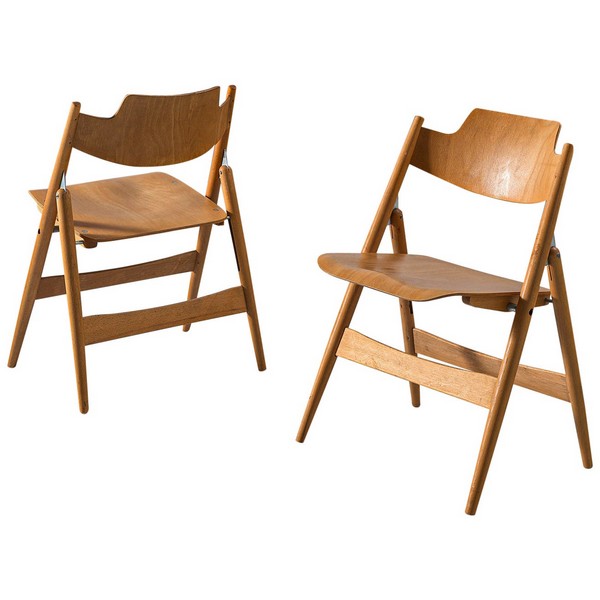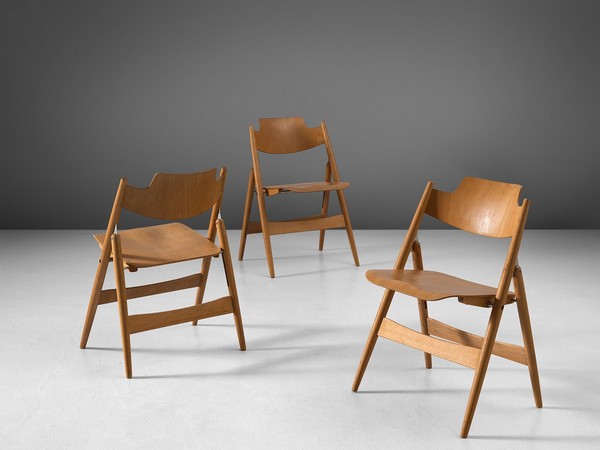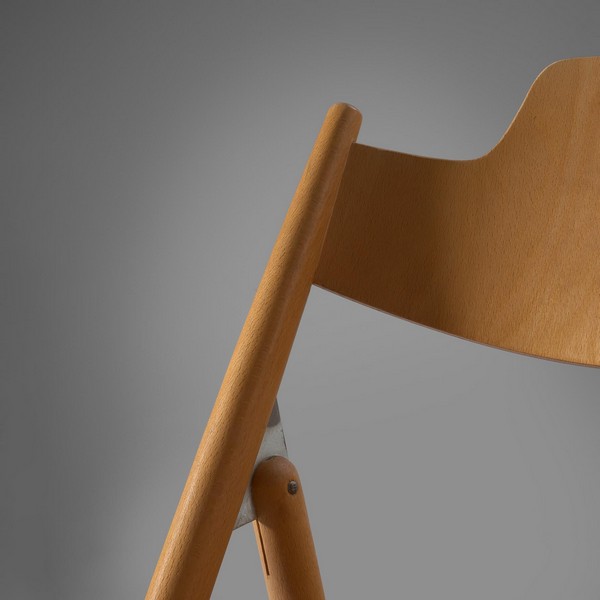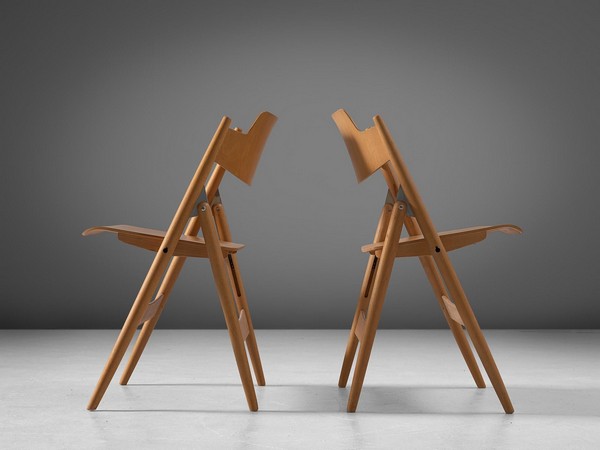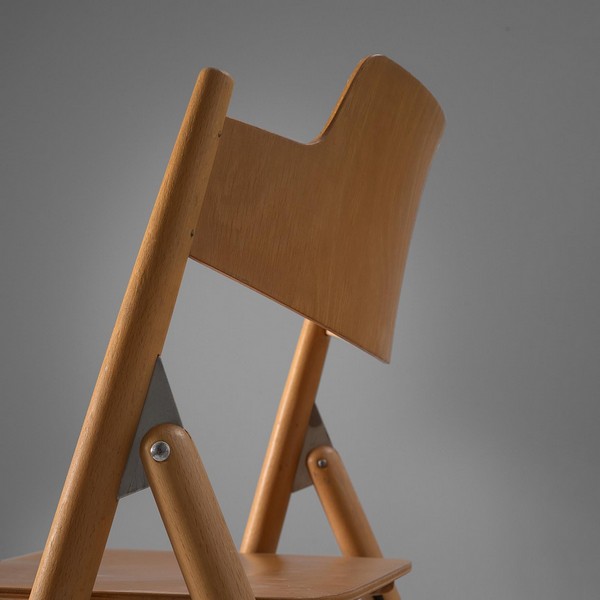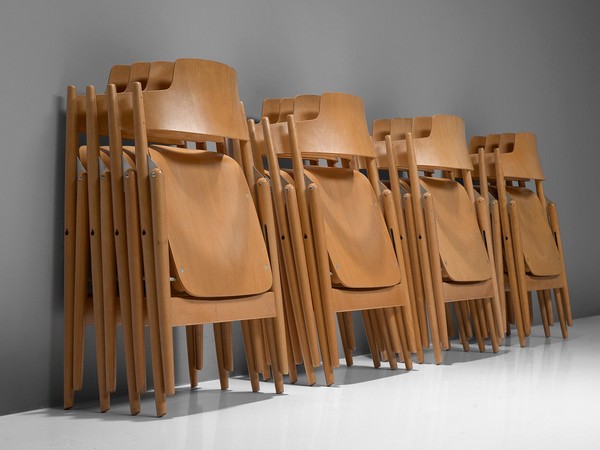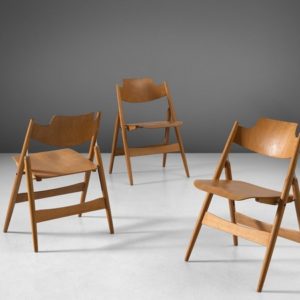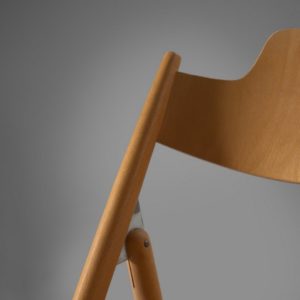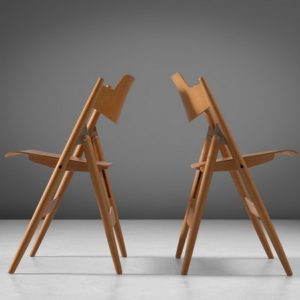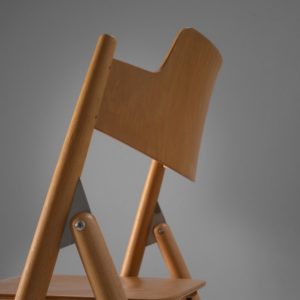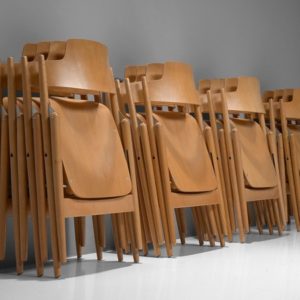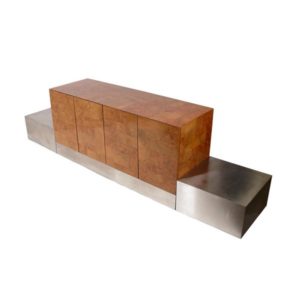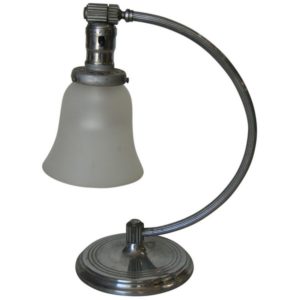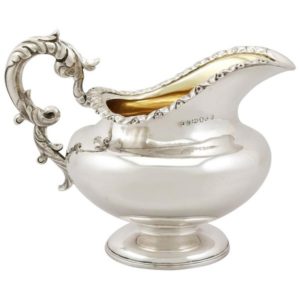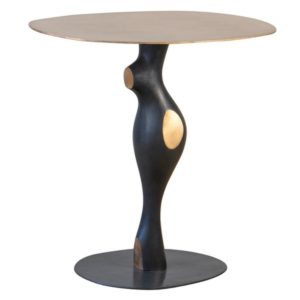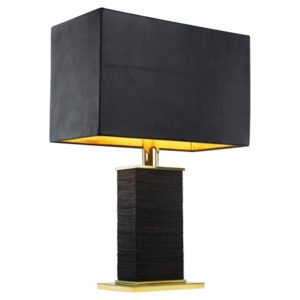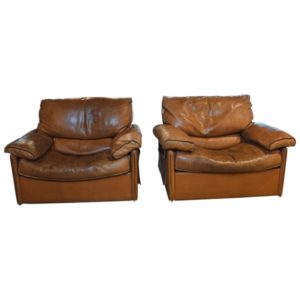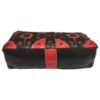Egon Eiermann for Wilde & Spieth, foldable chairs ‘SE 18’, beech, Germany, design 1952, later production
Famous German architect Egon Eiermann who is known for his keen designs embracing new materials and forms of the postwar period received the ‘Good Design Award’ by the Museum of Modern Art in 1953 for his ‘SE 18’ chair. A few years later the chair was represented at the World Exposition in Brussels.
What makes this chair a design icon is the way it combines a striking design with both comfort and functionality. One circular slat with tapered ends runs all the way up towards the backrest and is accomplished by a short slat in the back. The backrest features a unique shape that characterizes the whole design. Its slightly tilted position in combination with the ergonomic seat provides a pleasant chair. When not in use they may be folded together and take minimal storage space.
Please note that the shown price is the price per item.
German architect and furniture designer Egon Eiermann (1904-1970) was at the peak of his career in postwar Germany. He studied architecture at Technische Universität Berlin. German architects Heinrich Tessenow and Hans Poelzig had strong impacts of Eiermann’s work. After the WW ll Eiermann began teaching in Karlsruhe and opened his own office. One of his most famous projects is the new part of the Kaiser-Wilhelm-Gedächtnis-Kirche in Berlin. Besides his work as an architect Eiermann prove his taste and comprehension of craftsmanship designing timeless furniture.
